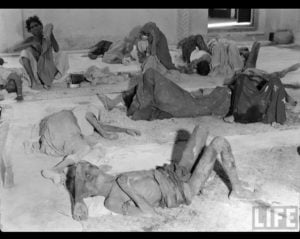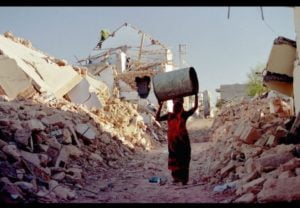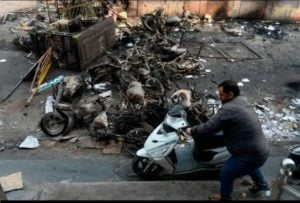As the saying goes, a picture is often worth a thousand words. Some pictures seize a moment, which define history. India has been witness to numerous such incidents, which have been captured by the camera for posterity.
Here’s a look at some of those images:
Godhra riots: This picture of Qutubuddin Ansari, a tailor, became the defining image of the horrifying Godhra riots in Gujarat, when India witnessed one of the worst episodes of communal violence. Qutubuddin became the face of the riots.

Operation Blue Star: The picture shows Army personnel firing at the Golden Temple in Amritsar on the orders of then Prime Minister Indira Gandhi. Operation Blue Star, as the mission was called, was carried out between June 1 and 8, 1984, to remove militant religious leader Jarnail Singh Bhindranwale and his followers from the buildings of the Harmandir Sahib (Golden Temple) complex. A few months later, Mrs Gandhi was assassinated by her Sikh bodyguards.

Bhopal Gas tragedy: In what was one of the darkest days in independent India, gas leak at the Union Carbide’s pesticide plant on December 2 and 3, 1984, affected over 5.5 lakh people. More than 20,000 people were estimated to have been killed as a result of exposure to the methyl isocyanate gas and other chemicals, though the official figure was much less. For several years, kids were born with deformities because of that tragic incident.

Babri Masjid demolition: Another dark December day, this one in 1992 in Ayodhya, when the Babri Masjid was demolished by Hindu kar sevaks (activists) who believed it was the birthplace of Lord Ram. Communal riots erupted all over the country, resulting in a lot of violence and deaths.

1947 Partition: This image amply reflects the ill-effects of the India-Pakistan Partition which left millions of people homeless, forcing them to relocate. It resulted in deaths, starvation, famines and what not.

Bhuj earthquake: A devastating earthquake shook Bhuj In Gujarat in 2001, reducing the town to shambles. The number of deaths was anything between 14 to 20 thousand, while 1.6 lakh people were injured.
Source – thoughtyoumayaskJallianwala Bagh massacre: Arguably the most horrific attack carried out by the British in pre-Independence India. On April 13, 1919, acting Brigadier-General Reginald Dyer ordered British Indian Army troops to fire at a crowd of unarmed Indian civilians in Amritsar’s Jallianwala Bagh. At least 400 people were killed.

Uttarakhand floods: In this spine-chilling visual, effects of a devastating flood in Uttarakhand in June 2013 are visible. The sacred statue of Lord Shiva stands as witness amid the ruins after cloudbursts led to floods and landslides, leaving over 5000 people dead.

26/11 attacks: No one in modern India will ever forget the horrifying 26/11 Mumbai terror attacks at several locations in 2008, carried out by Lashkar-e-Taiba members. One of the targets was the magnificent Taj Mahal hotel and this image of the hotel in flames stands out from that forgettable episode.

Nirbhaya case: Another shameful incident from the pages of modern India when a 23-year-old physiotherapy intern was tortured and gang-raped in a bus in New Delhi, on December 16, 2012. A fortnight after battling for life, she died. Countrywide protests followed against the Nirbhaya Gang Rape, and as the picture shows, police had to intervene several times to disperse angry protesters.

Delhi riots: Another instance of largescale communal violence, in February this year. It all started when Anti-Citizenship Amendment Act (CAA) protesters clashed with pro-CAA backers, but soon got out of hand leading to destruction of property and loss of lives. The man in this tries to get his bike out from a debris of burnt vehicles in Delhi.

Migrants’ woes: Another picture signifying a sordid tale — that of migrant workers who were desperate to return home after nation wide lockdown was extended in India to curb spread of Covid-19. The sight of this man, breaking down in the middle of nowhere while speaking to his family, went viral. He had come to know that his one-year old son had died. and there was no way he could reach home quickly.



